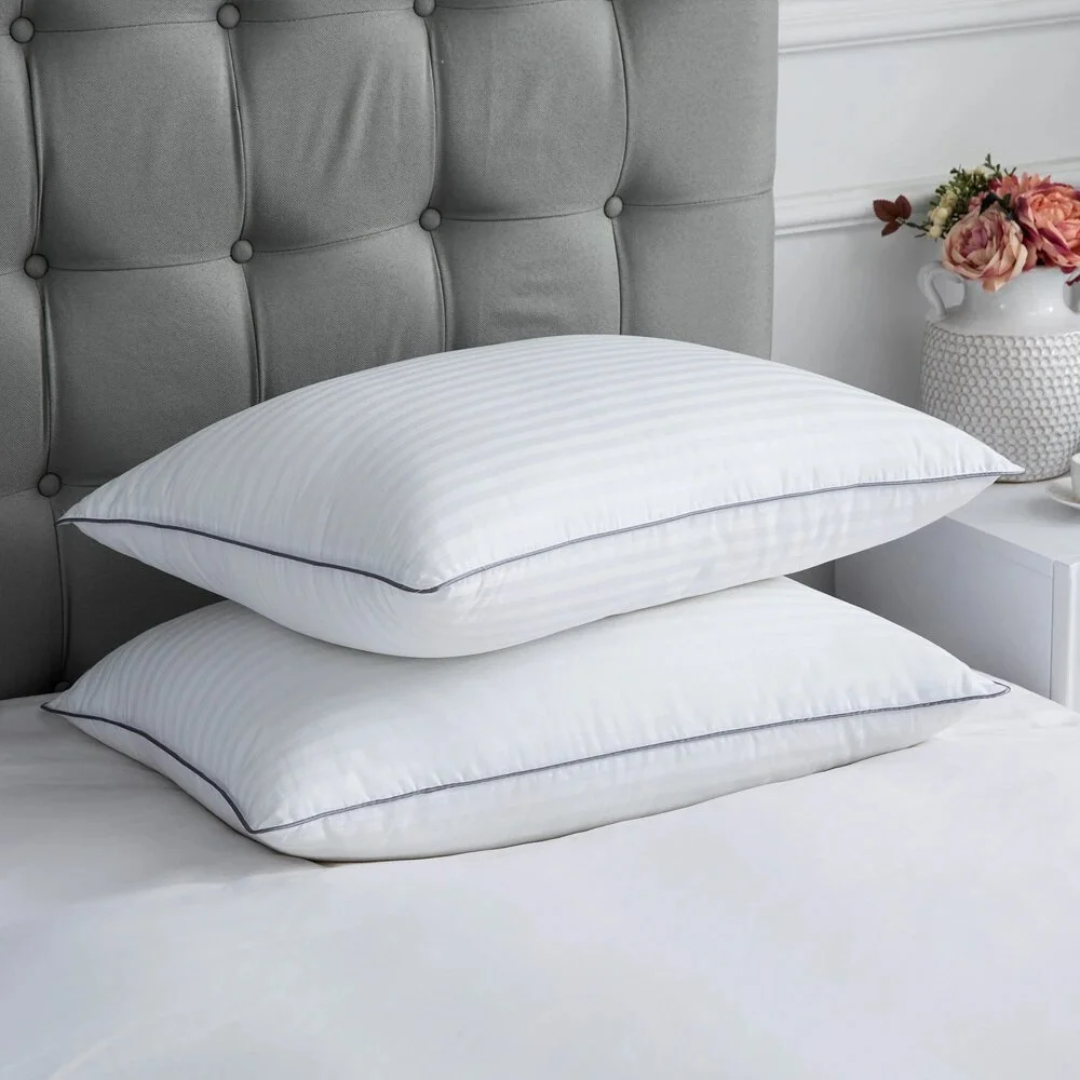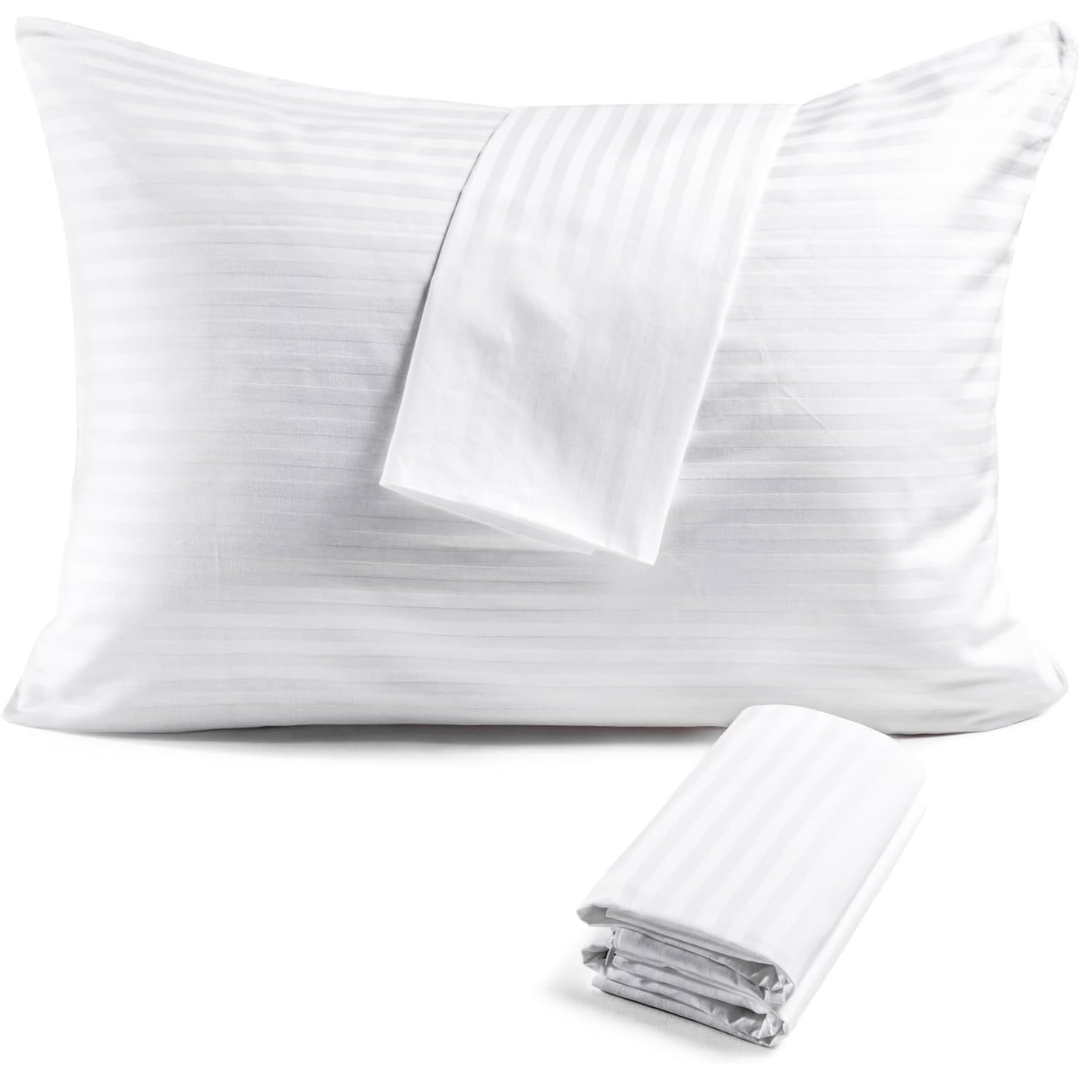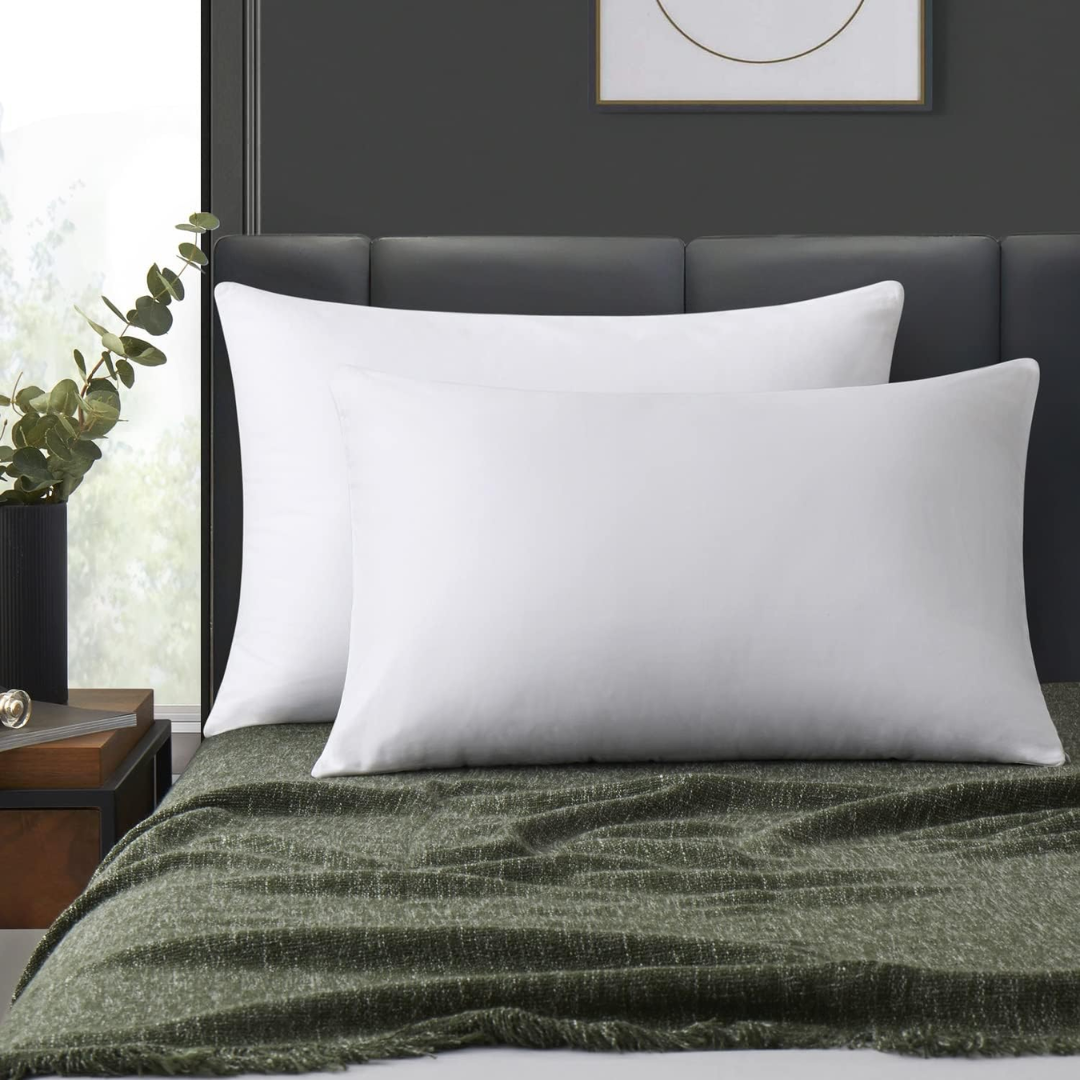How to Wash Pillows — The Fillings You Can Launder and Those You'll Ruin
Get it right the first time with these expert tips and tricks to keep your pillows in check year after year


Over time, pillows can accumulate oils, sweat, drool, and bacteria, making regular cleaning crucial for hygiene and longevity. While pillowcases should be washed frequently, the pillows themselves typically need cleaning every four to six months.
A good rule of thumb is to wash your pillows when you rotate your mattress, which is recommended quarterly. With the many different types of pillows on the market, it's best to know how to wash them correctly without damaging them. According to cleaning specialist Rocky Vuong, it's important to check the care label for specific instructions before washing any pillow. “Most types of pillows, including those made of polyester, microfiber, shredded foam, down, and down alternatives, are machine washable. However, some fillings require special care or cannot be washed at all.”
So, how exactly do you wash pillows? Here is everything you need to know, according to the experts.
What You’ll Need

Knowing how to clean your pillows properly helps extend their lifespan and keep them fresh. Below are tools you’ll need when washing specific pillows to help bring your beautiful bedroom ideas to life.
TOOLS:
• Pillow protector such as the Soprano Cotton Zipper Pillow Protector from Wayfair.
• Mild detergent or baby shampoo like SoCal Suds & Company Organic Baby Shampoo from Amazon.
• White Vinegar
• Fabric softener to add to your wash cycle to help fluff up your pillows.
How to Wash a Pillow

Your bedding and how you take care of it are important to a restful slumber as well as your home's overall aesthetic. That's why knowing how to clean bedding, specifically pillows, is a must.
Tom Ceconi, President of Heritage Park Laundry Essentials states there are two main ways to wash a pillow, machine washing or by hand. Once prepped with the right tools, follow the guide below depending on your pillow’s care instructions.
Machine Wash
Place your pillow in the washing machine on a gentle cycle with cold or warm water using a mild detergent. Using a mild detergent is perfect for delicate fabrics, including natural fibers like feathers.
To dry, tumble dry on low heat with wool dryer balls, such as Smart Sheep Wool Dryer Balls from Amazon. These balls help fluff and separate the feathers as they dry, reduce drying time, and keep the pillows from clumping.
Hand Wash
Some pillows cannot be machine washed and, therefore, must be hand washed instead. “Start by filling your bathtub with warm water and add a mild detergent or baby shampoo to create suds,” continues Tom. “Submerge the pillow and gently squeeze the water through it for a few minutes.”
Rinse thoroughly with clean water until no soap suds are left. Gently press on the pillow to remove excess water, then lay it flat to dry in a well-ventilated area, flipping occasionally. Be sure your pillows are fully dry before use to avoid mildew.
Pillow Fillings You Can and Can't Launder

Once you know how to wash your pillows effectively, the next step is to identify what pillow fillings can and cannot be laundered.
Washable Fillings:
Down and feather: These types of pillow are ideal for people who love a soft, squishy, and moldable pillow.
Polyester fiberfill: These types of pillows are usually filled with polyester or microfiber material, making them ideal for people with allergies as they are hypoallergenic.
Cotton: Generally machine washable, but check the care label.
Unwashable Fillings:
Memory foam: Spot clean only. Machine washing will ruin the structure.
Latex: Usually not washable. Check the care label, but most recommend spot cleaning or airing out.
Buckwheat: Definitely don't wash these! The hulls will absorb water and become moldy.
FAQs
How often can you wash pillows

According to Brian Sansoni, SVP of the American Cleaning Institute, pillows should be cleaned at least every three to six months. However if you eat in bed, have pets, or sweat a lot, you should wash pillows more regularly.
How often to replace pillows
You should aim to replace your pillow every two years. If you use high-quality pillows then they can last an additional year.
To extend the life of your pillows between washes, use pillow protectors under your regular pillowcases. These create an extra barrier against sweat, oils, and stains, keeping your pillows cleaner for longer.
If your pillows are no longer comfortable or have become lumpy, flat, or permanently stained, it may be time to replace them. A simple test to check if your pillow is still usable is to fold it in half. If it springs back to its original shape, it's still in good condition. If it stays folded, it's time for a replacement.
Protect Your Pillows With These Sleek Covers

Price: $13.99
Available in standard and King, this Mary's collection pillow cover set from Walmart has been designed with a strong zip with a elegant border around the edges of the case. This set is made from 100% cotton sateen.
Be The First To Know
The Livingetc newsletters are your inside source for what’s shaping interiors now - and what’s next. Discover trend forecasts, smart style ideas, and curated shopping inspiration that brings design to life. Subscribe today and stay ahead of the curve.

Seraphina is a contributing editor at Livingetc, writing Advice features on design, renovation and organisation. Seraphina is a qualified Interior Designer from KLC School of Design having worked at London-based interior design agencies Anouska Hempel and ND Studios. Seraphina has also completed her MA degree in Magazine Journalism at City, University of London, with previous experience including writing for Homes & Gardens, Women's Health, Food & Travel and Fabulous Magazine.
-
 5 Home Reno Projects You Should Never Do By Yourself — Especially if You Want to Avoid Costly Mistakes
5 Home Reno Projects You Should Never Do By Yourself — Especially if You Want to Avoid Costly MistakesExperts say even the most seasoned DIYers shouldn't attempt these high-risk renovations (especially if you want a worthwhile ROI)
By Lilith Hudson
-
 The 'New British' Style? This Victorian London Home Embraces Its Owners' Global Background
The 'New British' Style? This Victorian London Home Embraces Its Owners' Global BackgroundWarm timber details, confident color pops, and an uninterrupted connection to the garden are the hallmarks of this relaxed yet design-forward family home
By Emma J Page
-
 These Are the Dos and Don'ts of Bamboo Plant Placement — Follow This to Avoid Bad Feng Shui
These Are the Dos and Don'ts of Bamboo Plant Placement — Follow This to Avoid Bad Feng ShuiBy following the experts' guidance on where to place this houseplant you can usher luck, wealth, and prosperity into your home
By Lilith Hudson
-
 Is It Okay to Have a Mirror Facing a Door in Feng Shui? The Verdict Is In and It Just Might Surprise You
Is It Okay to Have a Mirror Facing a Door in Feng Shui? The Verdict Is In and It Just Might Surprise YouDecorating your home with mirrors calls for intention if you're dressing your space in accordance with Feng Shui. Here's what you should know.
By Amiya Baratan
-
 4 Things to Unpack as Soon as You Move House — For a Comfortable and Organized Fresh Start
4 Things to Unpack as Soon as You Move House — For a Comfortable and Organized Fresh StartIf you have a major move in the works and you're looking to prepare in advance, this is the starter kit you need to properly set up your new home.
By Amiya Baratan
-
 10 Decluttering Challenges to Have on Your Radar This Year — For a Tidier, More Mindful Home
10 Decluttering Challenges to Have on Your Radar This Year — For a Tidier, More Mindful HomeIf you're interested in transforming your home for the better, here are 10 decluttering challenges I recommend for a professionally tidy space.
By Amiya Baratan
-
 Biophilic Decluttering — What to Take Out of Your Home (and What to Put in) for a More Natural Home
Biophilic Decluttering — What to Take Out of Your Home (and What to Put in) for a More Natural HomeTry your hand at biophilic decluttering to ground your interiors, connect to the environment, and cure chronic clutter in one go. Here's how.
By Amiya Baratan
-
 The 10 Different Types of Kitchen Taps — And the Pros and Cons of Each One to Know Before You Pick
The 10 Different Types of Kitchen Taps — And the Pros and Cons of Each One to Know Before You PickFrom sleek pull-outs to vintage bridge taps, explore 10 kitchen tap styles that mix function, flair, and a splash of cool
By Linda Clayton
-
 How Much Does an Extension Cost in 2025? Renovation and Design Experts Break Down Your Budget
How Much Does an Extension Cost in 2025? Renovation and Design Experts Break Down Your BudgetExplore how much different types of extensions cost in 2025 to budget for your project accurately
By Amy Reeves
-
 9 Bathroom Storage Mistakes You're Probably Making That Make Using This Space Much Harder — And What to Do Instead
9 Bathroom Storage Mistakes You're Probably Making That Make Using This Space Much Harder — And What to Do InsteadDiscover which mistakes are to blame for your overcrowded and cluttered bathroom
By Seraphina Kyprios

